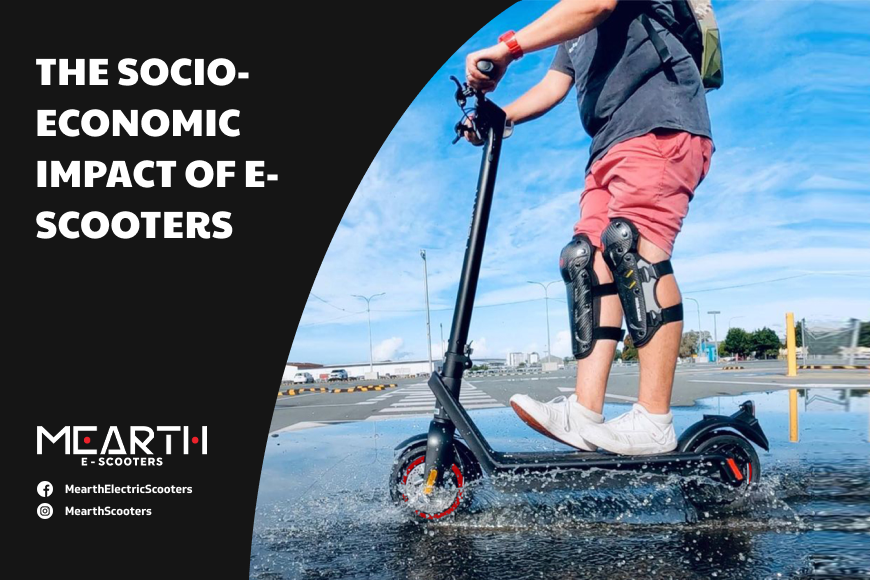
Not a lot has been said and so perhaps, many are unaware, ELECTRIC SCOOTERS bear some socio-economic impacts that must be seriously considered.
But first, what is meant by socio-economic impact? What socio-economic impact refers to is the changes that a proposed development or activity may have on the social and economic aspects of people, communities, and society as a whole. Its impact can be either positive or negative, direct or indirect, short-term or long-term, and may affect different groups of people in different ways. For example, the changes in income, business opportunities, living standards, health, wellbeing, recreation, social engagements, use of infrastructure, land or services, and more, can cause a positive or negative impact to those concerned or involved.
The aim of this article is to rally around to enhance the beneficial impacts and either curtail or avert undesirable impacts of the electric scooter in general. So here goes:
The first positive impact of electric scooters is that they can reduce the reliance on private vehicles and public transport. This results in time and money saved, traffic congestion and carbon emissions reduced, and air quality improved.
A study by Auckland Transport bared that e-scooter users saved an average of $14 per week on transport costs compared to non-users. Meaning, electric scooters can potentially reduce the number of vehicles on the road and the carbon footprint associated with .
The second positive impact of electric scooters is that they help improve the physical and mental health of users. While riding an electric scooter may not seem like a strenuous exercise, it requires some physical effort and coordination to navigate the trip, and the rider needs to be able to balance, steer, brake, and accelerate in a seamless coordinated movement.
When riding uphill and going against the wind, electric scooters can also increase the rider’s heart rate, making him burn calories. The study conducted by the Auckland University of Technology revealed e-scooter users had burned an average of 134 calories per ride, which is equivalent to walking for 30 minutes.
Riding an e-scooter has helped boost the mental health of users, where the riders, even able-bodied seniors have confirmed they experienced a sense of freedom, excitement and an eagerness for a bit of adventure -- exploring new places, enjoying nature and the scenery, and being able to socialize with others.
However, a persistent, gnawing concern is viewed to be a negative impact of electric scooters on the issue of safety, regulation and infrastructure.
In compliance with a city or region’s traffic/road regulations, electric scooters can travel at an allowable speed of up to a maximum 20-25 km/h only. If this is violated and poses a risk, where an accident occurs, like a collision or the rider falling off from the electric scooter, or if it hits and injures a pedestrian, then fines, penalties or sanctions await the one who violated the rules. There are times too, when an electric scooter may be seized or confiscated by authorities.
Helmets are a requisite for all e-scooter riders to wear before they ride. Regulations are firmly put in place for all to follow. And under the vehicles Land Transport Act 1998, electric scooters are classified as low-powered.
Infrastructure is another issue. Electric scooters are only allowed to be ridden on footpaths, cycle lanes, and shared paths for the rider to be able to operate the rideable smoothly and safely.
But not all infrastructure are constructed the same, nor they sufficient or suitable infrastructure for electric scooters. Some footpaths are too narrow, uneven, or crowded for electric scooters to share with pedestrians. Some cycle lanes are too busy or dangerous for electric scooters to share with cyclists. Some shared paths are too remote or isolated for electric scooters to access.
In review, electric scooters have very good and positive impacts, as well as negative socio-economic impacts that need to be balanced.
There is no doubt that electric scooters offer many benefits to the riders, the community and society as well. From speed, convenience, affordability, savings, environment-friendliness, physical and mental health improvement, the benefits are indisputable.
Moving ahead, the challenges and risks that form a negative impact are being addressed carefully to be able to come up with a practicable and long-term solution for everyone in every situation to abide by responsibly, as this will be a valuable addition to the country’s transport system.




Leave a comment
This site is protected by hCaptcha and the hCaptcha Privacy Policy and Terms of Service apply.